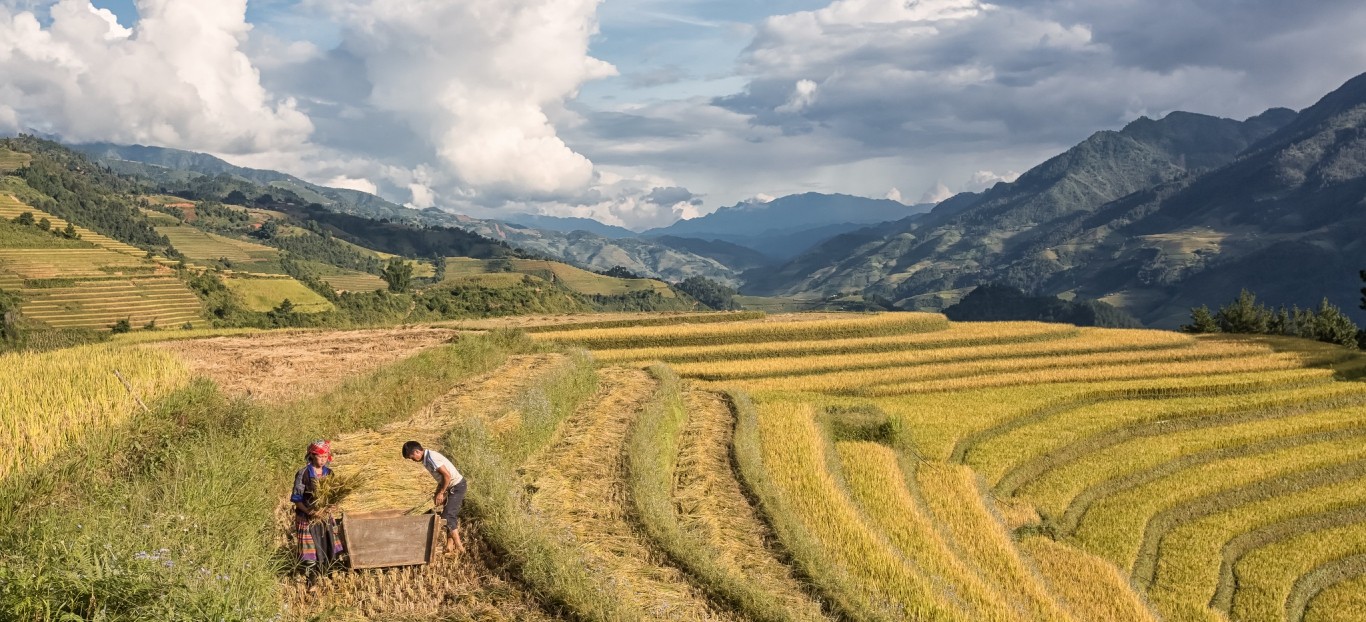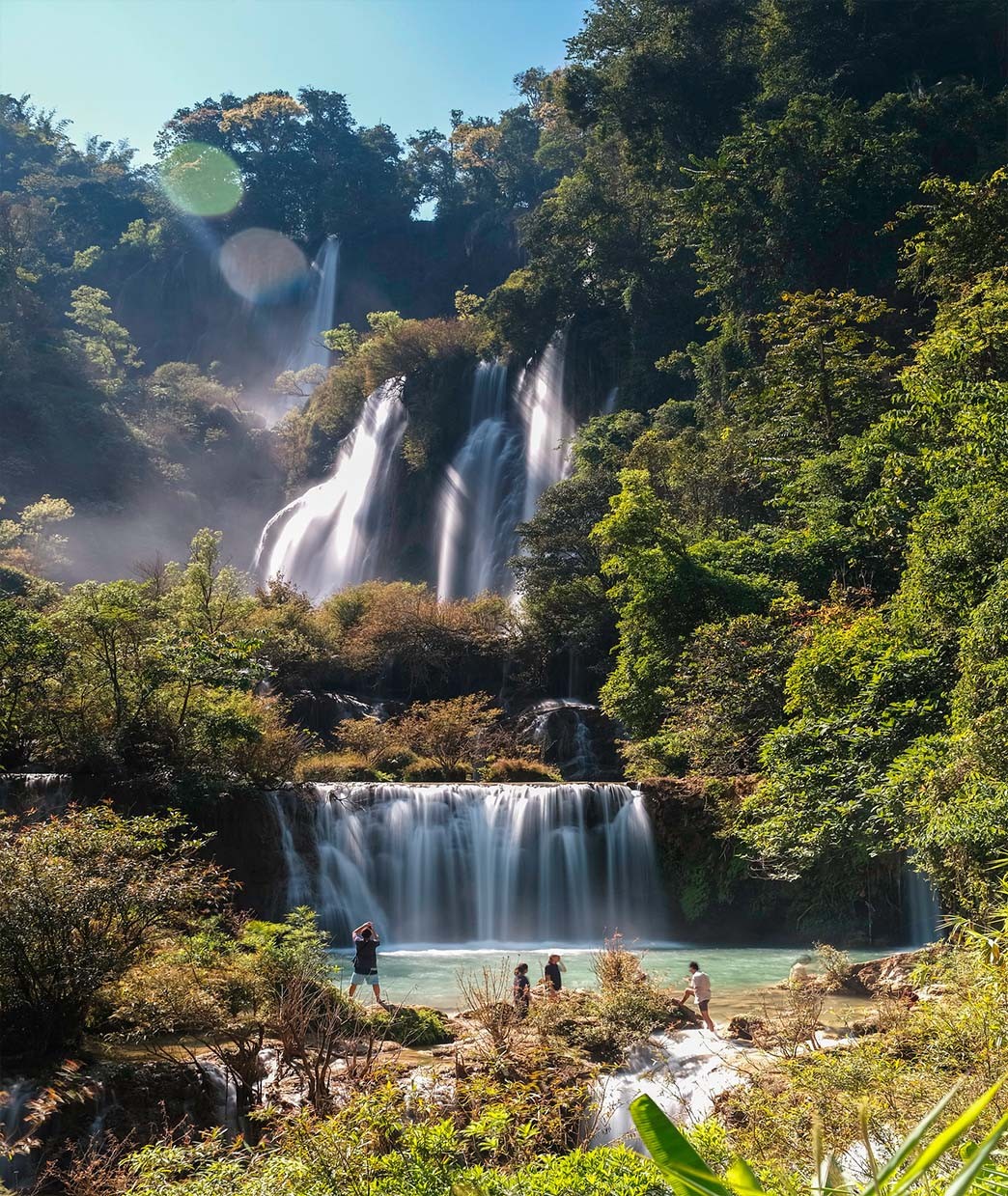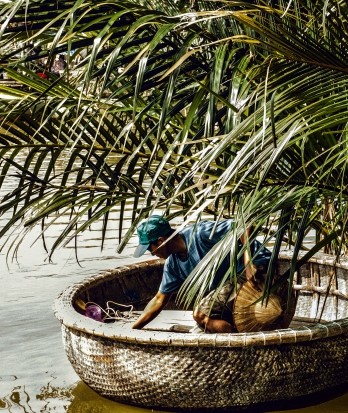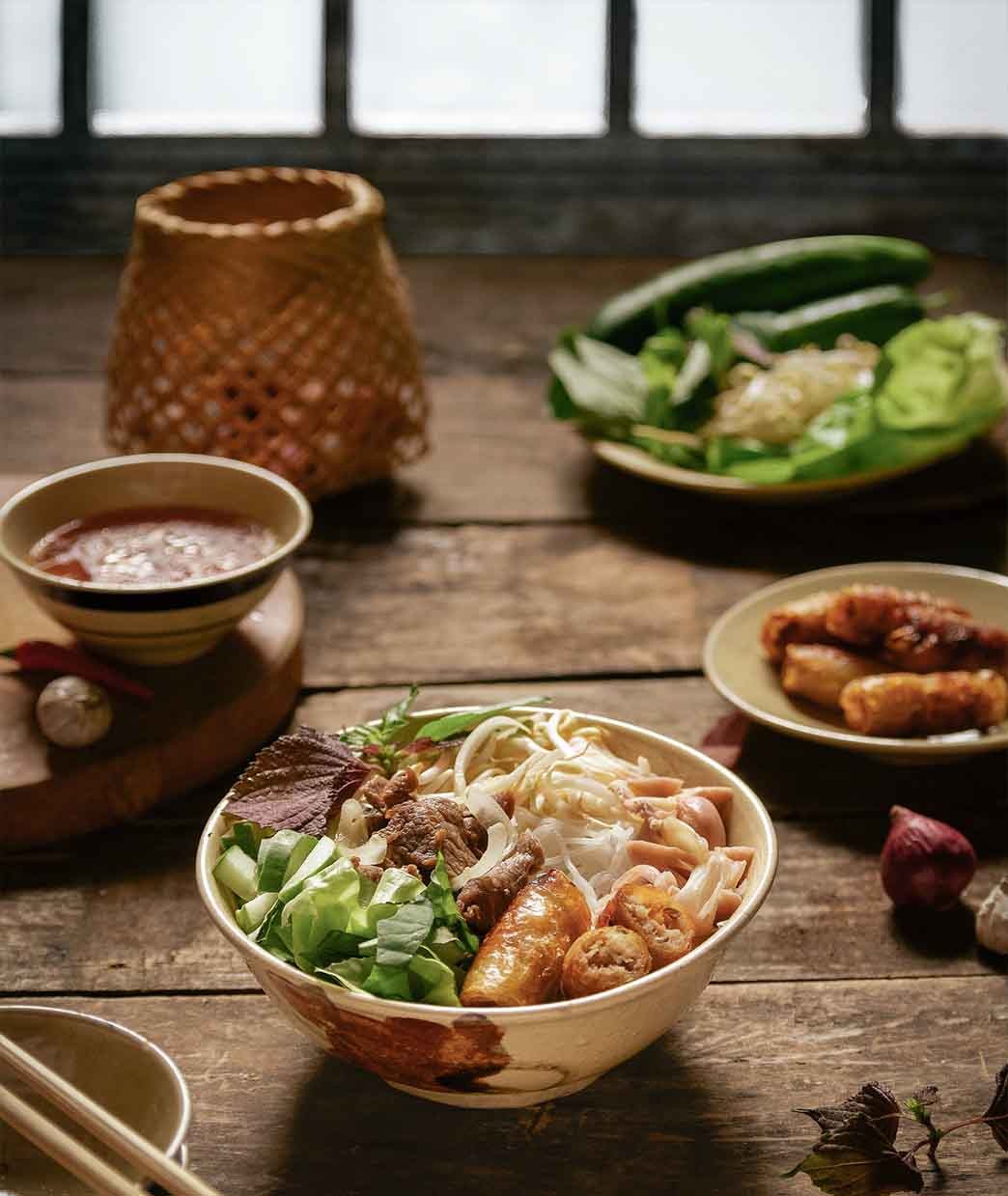Expert Tips For Sapa Trekking Tours

Known for its breathtaking rice terraces, misty mountains, and vibrant ethnic communities, Sapa is a trekker’s paradise. Whether you’re a seasoned hiker or just someone who enjoys a good walk (and maybe a bit of a sweat), Sapa’s trails will make you feel like you’ve stepped into a postcard.
And don’t worry if your idea of “roughing it” involves room service—Sapa’s got something for everyone. Mystica Vietnam Tours here share with you the local/expert tips for your Sapa Trekking Tours. So, lace up those trekking shoes (or buy some when you get there), and let’s hit the trails. Just be prepared: the views might take your breath away, but the uphill climbs definitely will!
.jpg)
Best Time for Trekking in Sapa
Timing is everything when it comes to Sapa Trekking. The region's mountainous terrain means each season offers something unique, so it all depends on what kind of adventure you're after.
The best time for trekking in Sapa is from mid-August to mid-September when the rice fields transition from lush green to golden yellow. After September, the fields are harvested, and you’ll miss the iconic landscapes. Also, avoid September 2nd, as it's Vietnam's National Day, and Sapa gets packed with local tourists.
Spring (March - April): This is one of the best times to trek in Sapa. The weather is mild, the skies are clear, and the hills come alive with blossoming flowers. If you’re lucky, you might even catch the famous peach blossoms in full bloom. Perfect for those Instagram-worthy shots!
Summer (May - August): While the weather is a bit hotter, it’s still cooler than much of Vietnam, and the rice terraces turn a vibrant green. Just pack a rain jacket, as summer showers can roll in. A little rain never hurt anyone—except maybe your camera.
Autumn (September - November): Arguably the most beautiful time for Sapa trekking, the rice terraces turn golden, and the air feels fresh and crisp. Fewer tourists, more photo ops, and pleasant trekking temperatures make this season a favorite.
Winter (December - February): It’s cold, sometimes even snowy, but if you enjoy a chilly challenge and stunning fog-draped mountains, winter trekking in Sapa has its own charm. Just be sure to bundle up and bring those extra socks!
Top Sapa Trekking Routes
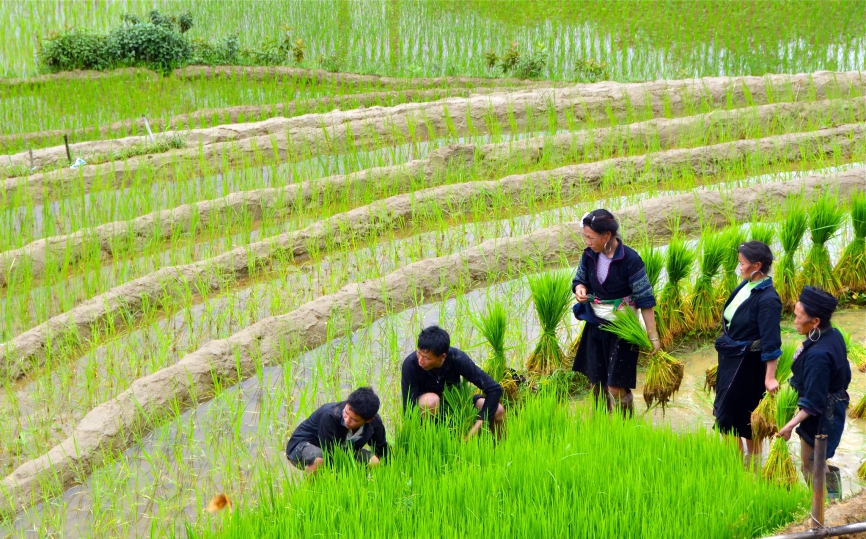
Whether you're looking for iconic landscapes or want to explore less-traveled paths, Sapa offers trekking routes for every adventurer. Here are some of the top trails for you to consider:
1. River Trekking Trail
- Tour Duration: 1 day
- Starting Point: O Quy Ho Commune, 11 km from Sapa
- Highlights: This day trek offers a stunning descent through scenic rice terraces and remote villages. You’ll get up-close with the Black Hmong people in Sin Chai and San Sa Ho villages, and the trek is topped off with breathtaking views of Fansipan Mountain—Vietnam’s highest peak. Plus, it’s easy on the legs, so you can focus on those views (and selfies).
2. Muong Hoa Valley Trek
- Tour Duration: 2 days, 1 night (can extend to 4 days)
- Starting Point: Sapa Town
- Highlights: Known for its sweeping views of terraced rice fields, Muong Hoa Valley is a must-see. The trek takes you through a variety of ethnic villages, each offering a glimpse into local life. It’s like stepping into a painting, but with more mud (don’t worry, it’s part of the fun). If you want a more immersive experience, extend the trek to 4 days with a local guide.
3. Ban Ho Valley Trek
- Tour Duration: 3 days, 2 nights
- Starting Point: Hanoi or Sapa Town
- Highlights: For a more in-depth experience, Ban Ho Valley is the perfect choice. You’ll trek through remote villages inhabited by the Tay, Red Dao, and Black Hmong people, crossing stunning valleys and rivers along the way. The homestays here are the real gem, giving you a chance to soak up local life (and maybe some homemade rice wine).
4. Sapa – Ta Giang Phinh Trek
- Tour Duration: 2 days, 1 night
- Starting Point: Sapa Town or Hanoi
- Highlights: This 29-kilometer trek offers an off-the-beaten-path experience through villages like Gia Thau and Kim Ngan. You’ll learn about the life of the Red Dao people, and there’s even a local cooking class and a chance to visit the Cold Waterfall. It’s not just a trek; it’s a cultural immersion.
5. Sapa Nomad Trekking Tour
- Tour Duration: 4 days
- Starting Point: Sapa Town
- Highlights: Designed for those who want to stray far from the typical routes, this tour takes you deeper into the wilderness of the Hoang Lien Son mountains. Each day introduces new scenery, new villages, and of course, new dishes to try at each homestay. For those looking to really disconnect, this is the trek for you.
6. Sapa Farm Visit
- Tour Duration: 2 days, 1 night
- Starting Point: Sapa Town
- Highlights: This trek combines the beauty of the Muong Hoa Valley with the hands-on experience of farm life. After a short car ride, you’ll escape the tourist crowds and arrive at Ban Ho Valley, where the Tay people welcome you with smiles and open arms. The real charm here is the chance to try farm work for yourself—perfect for those looking to dig in (literally!). From your homestay, you’ll trek to neighboring communities, making this an immersive cultural experience.
7. The Red Dao Experience
- Tour Duration: 2 days, 1 night
- Starting Point: Sapa Town
- Highlights: This 24-kilometer trek takes you from Sapa to Ma Tra via Suoi Ho, and offers a fascinating look into the region's French Colonial history, with ancient villas and churches along the way. One of the highlights is witnessing the Red Dao people’s vibrant culture, especially their embroidery and traditional costumes. It’s a hands-on experience that allows you to truly appreciate the richness of their craftsmanship and way of life.
Trekking Tips and Essentials
Before embarking on your Sapa trekking adventure, preparation is key. Whether you're an experienced hiker or new to trekking, having the right gear and knowing what to expect will make your journey smoother and more enjoyable. Here’s a guide to help you get ready:
1. Packing List: What to Bring
Trekking Shoes: Invest in a good pair of trekking shoes with solid grip. Sapa’s terrain can be muddy and uneven, especially during rainy months, so shoes with ankle support are a must. If you forget, don’t worry! You can find decent ones in Sapa town.
Clothing: Layering is essential. Mornings and evenings can be chilly, but midday can be warm. Opt for moisture-wicking base layers, a light jacket, and a waterproof outer layer for unexpected rain. Quick-drying pants are also a plus. Don’t forget a hat, sunglasses, and sunscreen to protect yourself from the sun.
Trekking Gear: A light backpack is great for carrying essentials like water, snacks, a map, and a first aid kit. Trekking poles can also be useful, especially if you’re tackling steep or slippery trails. And, of course, pack your camera for those jaw-dropping views!
Other Essentials: Bring insect repellent, wet wipes, a portable charger, and a reusable water bottle. Headlamps or a flashlight might come in handy for early morning or late evening treks.
2. Safety Tips
Altitude Awareness: While Sapa isn’t as high as some other trekking destinations, the elevation can still affect you, especially if you're not used to it. Listen to your body, take breaks when needed, and don’t push yourself too hard. Ambulance car wont drive to high mountain, but you can call 113 for help. It's like 911 in USA.
Weather: Sapa’s weather can be unpredictable, so always check the forecast before heading out. Rain and fog can roll in quickly, reducing visibility and making trails slippery. If the weather takes a turn, be prepared to pause or even reschedule your trek. Forget which season has best weather for trekking ? roll up, read again you golden fish!
First Aid: A basic first aid kit is essential. Pack band-aids, antiseptic cream, blister pads, and any personal medications. For longer treks, you may also want to include pain relievers and anti-diarrheal medicine, just in case.
Safety: there's no buglars, no robbers on up high mountain! No tiger, no jaguar and of course no aligator. But, leech, mosquito, hidden holes are the top threats. Here's how to avoid: use essential oil to chase mosquito away + go to any pharmacy shop in Vietnam, ask for “dầu gió” (bottle of mentholated oil or medicated oil), apply on your sneakers and clothes. The spicy, tingling sensation of mentholated oil can deter leeches and other parasites from attaching to your clothing. To avoid hidden holes in the forest: open your eyes.
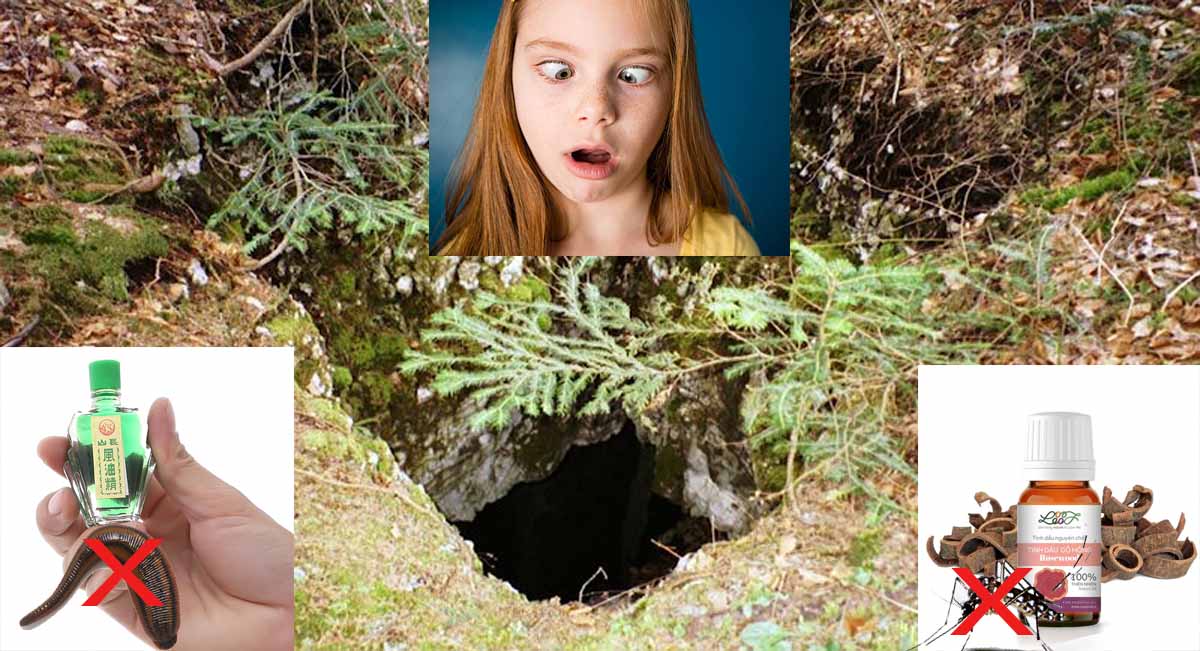
3. Navigation Tools
Maps: Old-school maps are still handy! You can find trekking maps online or pick up one from your hotel in Sapa. Many trails are well-marked, but a map will keep you on track if you venture into lesser-known routes.
The 3g connection up on high mountain is terrible, dont count on google map. Mystica Vietnam Tours tell you some Vietnamese sentences to ask a local person if you're lost: =))))) :)))
- Which way to go back to Sapa town? : Đi về thị trấn Sapa Hướng nào (/di: veɪ tʰi: tʃʌn sa:pa: hɜ:ŋ naʊ/)
- Which way to the nearest village ? :Đi về làng gần nhất hướng nào ? (/di: veɪ la:ŋ ɡʌn njʌt hɜ:ŋ naʊ/)
- I am hungry and lost: Tôi đói và bị lạc (toi dɔɪ va: bi: lac)
Just in case, you know. Dont worry, if you are a frequent traveler who is brave enough to do trekking in a far south east asia country on your own, you are good at navigation. Keep being brave!
4. Staying Hydrated and Nourished
Hydration: Always carry enough water with you, especially on longer treks. A 1.5-liter bottle should be the minimum for a half-day trek. You can refill your bottle in most villages or at homestays. To be safe, bring purification tablets if you’re unsure of the water quality.
Snacks: Trekking burns a lot of energy, so pack lightweight, high-energy snacks like nuts, granola bars, or dried fruit. Most homestays will offer meals, but it’s good to have something on hand if hunger strikes mid-trail.
Budget for Sapa Trekking
Trekking in Sapa can cater to various budgets, whether you're looking for a simple day trek or a multi-day guided adventure. Here’s a breakdown of what to expect, so you can plan accordingly:
1. Guided Tours vs. Self-Guided Treks
Self-Guided Treks: If you're confident navigating Sapa’s trails on your own, self-guided treks are the most budget-friendly option. Aside from accommodation, meals, and transportation, the main cost is any entrance fees (like for Fansipan National Park). You can also grab a free trekking map at your hotel or from local tourist information centers. Budget for around $5–10/day for basic food and other small expenses.
Guided Treks: If you prefer a more structured experience, guided tours come at a higher price but offer added convenience, including expert knowledge of the trails and culture. Daily rates for group tours typically start at around $25/person, while private tours can go up to $50–$80/day depending on the route and services included. Well, of course a good travel company will ensure your trip is seamless, joyful and full of authentic experiences (like Vietnam Mystica Tours does), but if you find it easy, you can do it yourself.
2. Accommodation Costs
Homestays: One of the best ways to experience Sapa is by staying in a local homestay. Prices are budget-friendly, typically ranging from $10–$12 per night, depending on the village and level of comfort. Meals are often included, which adds great value.
Hotels/Guesthouses: If you prefer a little more comfort, budget hotels and guesthouses in Sapa town start at around $25–$50 per night. Higher-end hotels with more amenities can cost upwards of $70–$150 per night.
For teachers, students (2nd year), contact us +84 919 666 568, we'll tell you which dorm bed is cheapest in Sapa.
3. Transportation
- Getting to Sapa:
- Bus: A budget option is taking a bus from Hanoi to Sapa, which costs about $10–$20 one way. Sleeper buses are popular for overnight journeys.
- Train: For a more scenic and comfortable option, the overnight train from Hanoi to Lao Cai (followed by a short bus to Sapa) costs around $20–$30 for a basic seat, and up to $70 for a sleeper cabin.
- Local Transportation: Once in Sapa, transportation costs depend on how far you plan to trek. A motorbike taxi or a car to remote villages costs between $5–$15 for a one-way trip. You can also rent motorbikes for around $7–$10/day if you're comfortable with the roads.
4. Meals and Snacks
Homestays and Local Restaurants: Meals at homestays are often included in the price, but eating out in Sapa town is affordable too. A meal at a local restaurant will cost you around $3–$7, depending on the dish. More upscale restaurants will be $10–$15 per meal.
Snacks and Drinks: Buying snacks from local markets or small shops is inexpensive. Plan for about $1–$3 per snack stop, and make sure to stock up on bottled water, especially for longer treks.
5. Extras and Miscellaneous
Entrance Fees: Some treks, such as the Fansipan trek, have entry fees that range from $5–$15. Be sure to check in advance if the area you're trekking requires a permit or ticket.
Tipping: Tipping is not mandatory but appreciated, especially if you're on a guided trek. A tip of around $5–$10/day for your guide is standard, depending on the quality of service.
With these factors in mind, a basic budget for a 2-3 day self-guided trek in Sapa might be around $100–$150 per person, while a more comfortable guided trek with accommodation and meals could cost anywhere from $200–$400.

Author: CEO Tanbang
